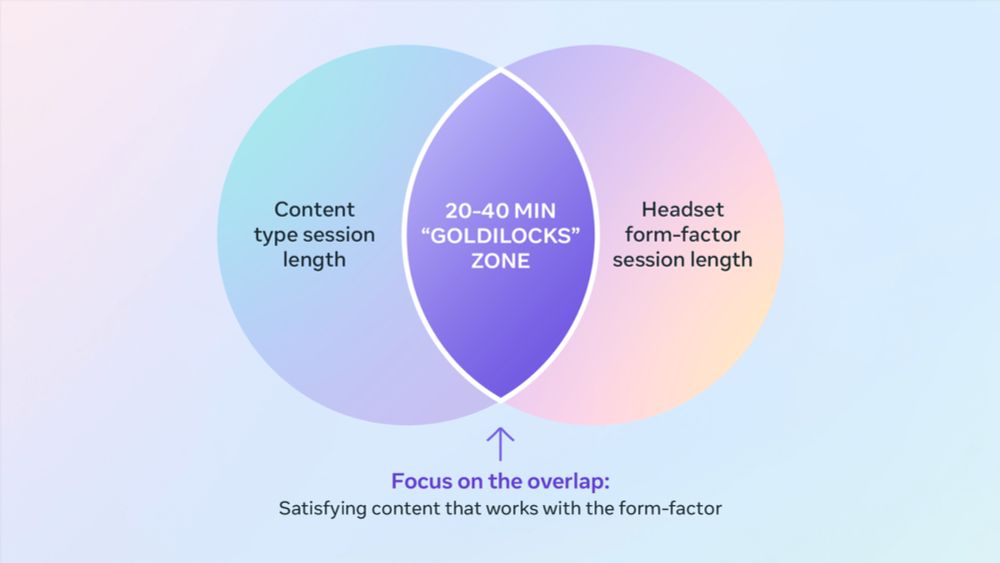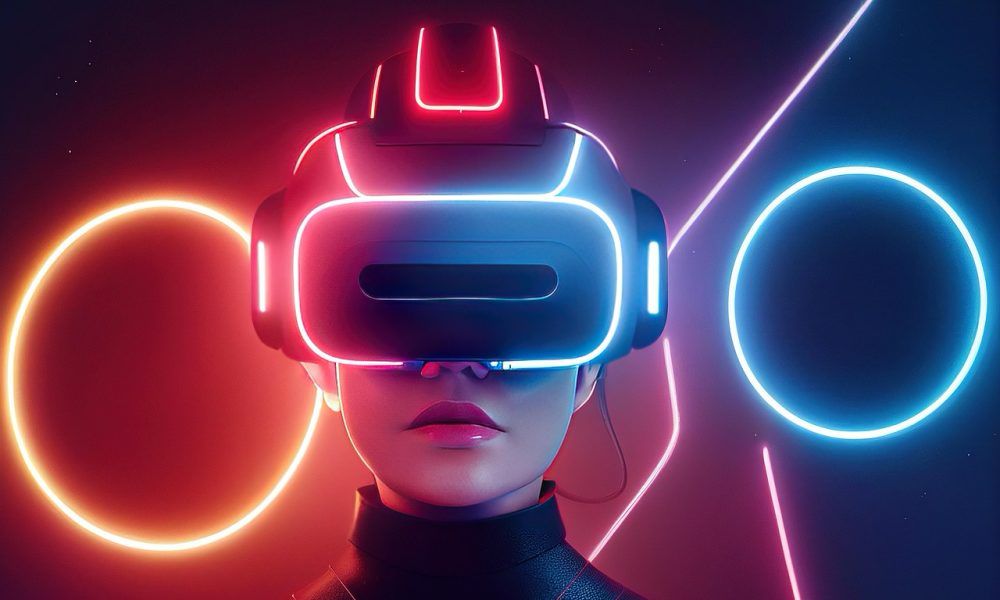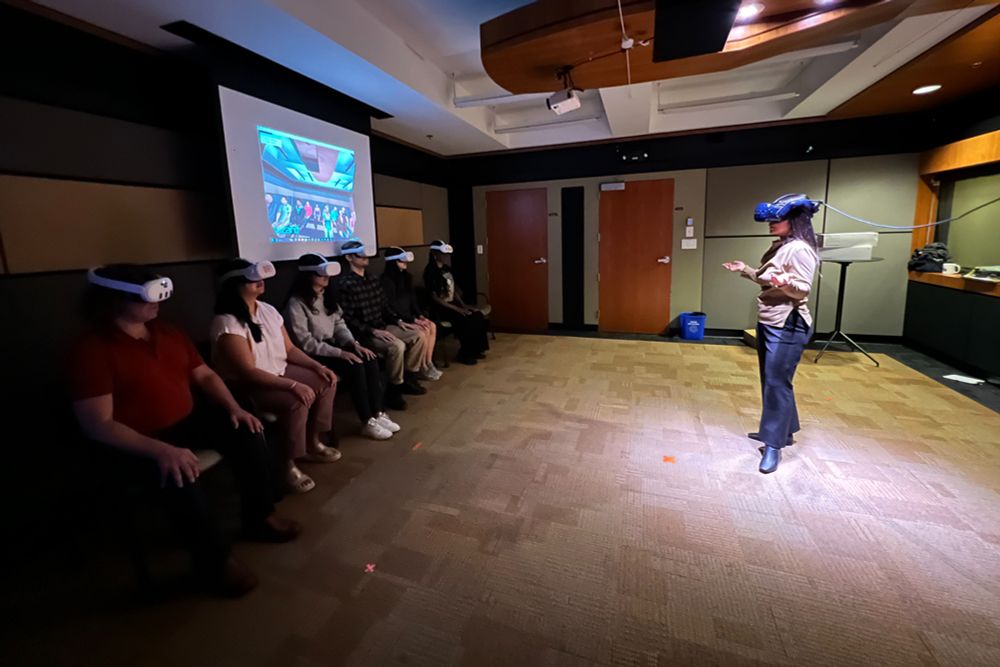
Stanford Ocean Acidification Experience on Meta Quest
Stanford researchers have produced a virtual underwater experience to allow you to observe firsthand what reefs are expected to look like by the end of the century if we do not curb our CO2 emissions....
The Stanford Ocean Acidification Experience, downloaded from Steam in over half of the countries in the world, showcased everywhere from Superbowl to Senate, studied thoroughly, with scholars typically demonstrating increased learning and motivation.
Now Free on Meta!
www.meta.com/experiences/...
30.09.2025 21:36 — 👍 2 🔁 2 💬 0 📌 0

Stanford Ocean Acidification Experience on Meta Quest
Stanford researchers have produced a virtual underwater experience to allow you to observe firsthand what reefs are expected to look like by the end of the century if we do not curb our CO2 emissions....
The Stanford Ocean Acidification Experience, downloaded from Steam in over half of the countries in the world, showcased everywhere from Superbowl to Senate, studied thoroughly, with scholars typically demonstrating increased learning and motivation.
Now Free on Meta!
www.meta.com/experiences/...
30.09.2025 21:36 — 👍 2 🔁 2 💬 0 📌 0

People become attached to places they spend time in. 3D maps allow visits in VR. Santoso & colleagues show that visiting distant locations makes even politically conservative participants care about real climate change news in that city, compared to static images.
vhil.stanford.edu/publications...
18.09.2025 22:03 — 👍 6 🔁 4 💬 0 📌 1
Virtual Reality Reduces Climate Indifference by Making Distant Locations Feel Psychologically Close
Journal Article
Virtual Reality Reduces Climate Indifference by Making Distant Locations Feel Psychologically Close - from @stanfordvr.bsky.social #VirtualReality
vhil.stanford.edu/publications...
18.09.2025 23:32 — 👍 2 🔁 1 💬 0 📌 0
Google Earth remains the best thing to happen to VR, which is impressive for an application that hasn’t been updated for nearly 8 years.
18.09.2025 22:21 — 👍 3 🔁 1 💬 0 📌 0

People become attached to places they spend time in. 3D maps allow visits in VR. Santoso & colleagues show that visiting distant locations makes even politically conservative participants care about real climate change news in that city, compared to static images.
vhil.stanford.edu/publications...
18.09.2025 22:03 — 👍 6 🔁 4 💬 0 📌 1

Department of Communication - Mediated Interpersonal Communication
University of California, Davis is hiring. Apply now!
We’re hiring @ucdavis.bsky.social Comm! TT Asst Prof in Mediated Interpersonal Communication. Our dept blends behavioral, biological & computational strengths at one of the most interdisciplinary campuses anywhere. Apps due Oct 15. Glad to chat recruit.ucdavis.edu/JPF07289
04.09.2025 17:34 — 👍 9 🔁 7 💬 0 📌 1

Stanford Virtual Becomes Reality on Meta Quest
With Virtual Reality technology widely available, it’s more important than ever to understand its impact on people and society. Explore highlights of over two decades of research from Stanford's Virtu...
Virtual Becomes Reality finally available (for free) on Quest. Take a guided 15-minute tour of the Stanford lab. Fly like a hero, walk the plank, defend coral in Palau, become a QB, dance with Grover, transform identity in the mirror. Now we are bringing the lab to you!
www.meta.com/experiences/...
02.09.2025 14:55 — 👍 13 🔁 7 💬 0 📌 1
I had a blast doing the Stanford #VR lab experience! It provides a wide sample of the powerful #virtualreality features available to the current technology. I highly recommend it to anyone that ever wondered what the tech can actually do! #stanford
02.09.2025 16:45 — 👍 6 🔁 4 💬 0 📌 0

Stanford Virtual Becomes Reality on Meta Quest
With Virtual Reality technology widely available, it’s more important than ever to understand its impact on people and society. Explore highlights of over two decades of research from Stanford's Virtu...
Virtual Becomes Reality finally available (for free) on Quest. Take a guided 15-minute tour of the Stanford lab. Fly like a hero, walk the plank, defend coral in Palau, become a QB, dance with Grover, transform identity in the mirror. Now we are bringing the lab to you!
www.meta.com/experiences/...
02.09.2025 14:55 — 👍 13 🔁 7 💬 0 📌 1

Sleep & VR Questions
Dearest VR users, please take my survey about sleep and VR use.
Dearest non-VR users, please re-skeet this into the orbits of more VR users. docs.google.com/forms/d/e/1F...
23.08.2025 01:55 — 👍 32 🔁 27 💬 10 📌 2

SIGGRAPH 2025 Experience Hall Ignites the Future of Interaction and Storytelling
/PRNewswire/ -- The SIGGRAPH Experience Hall has always been more than a show floor; it's a portal. At SIGGRAPH 2025, that portal opens again, inviting...
BEASTS: Dual Perspectives on Virtual Puppetry through Theatrical Expression and XR Research
Stanford VHIL & C.U.T.E. blend theater & research via live digital puppetry drawing on Korean folklore. Performer creates & becomes shaped by fantastical representations.
www.prnewswire.com/news-release...
11.08.2025 17:50 — 👍 7 🔁 1 💬 0 📌 0
Sobre ponerse en los zapatos del otro: es la compasión guiada con la razón, no la empatía (Bloom). La primera te mueve a ayudar con una base moral, la segunda solo te lleva a un estado mental.
La #VR, como máquina de empatía, es inevitable. Que luego razones y eso haga que ayudes al otro, un mundo.
06.08.2025 15:27 — 👍 4 🔁 2 💬 1 📌 0
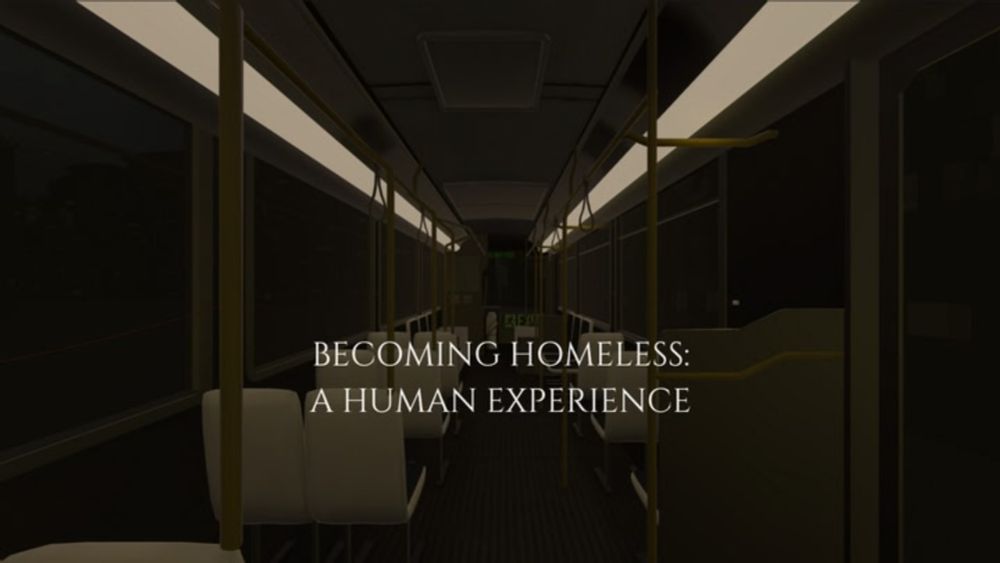
Becoming Homeless on Meta Quest
In this immersive virtual reality experience, spend days in the life of someone who can no longer afford a home. Attempt to save your home and to protect yourself and your belongings as you walk in an...
Years later (and many polygons fewer) we finally ported Becoming Homeless to the Meta Quest for free.
www.meta.com/experiences/...
Premiering at the Tribeca Film Festival (2017), VHIL's most studied piece on VR empathy. Samples in the 1000s, behavioral measures, longitudinal outcomes months later.
05.08.2025 22:15 — 👍 8 🔁 5 💬 1 📌 1

Becoming Homeless on Meta Quest
In this immersive virtual reality experience, spend days in the life of someone who can no longer afford a home. Attempt to save your home and to protect yourself and your belongings as you walk in an...
Years later (and many polygons fewer) we finally ported Becoming Homeless to the Meta Quest for free.
www.meta.com/experiences/...
Premiering at the Tribeca Film Festival (2017), VHIL's most studied piece on VR empathy. Samples in the 1000s, behavioral measures, longitudinal outcomes months later.
05.08.2025 22:15 — 👍 8 🔁 5 💬 1 📌 1
El factor de forma del visor #VR nos da unos 30 min antes de sentirse incómodo por el peso.
¿Y la carga cognitiva? La simulación de contextos puede pesar más que el propio cacharro.
30.07.2025 10:53 — 👍 3 🔁 2 💬 2 📌 0

Personality activates differently depending on environmental context. Also in VR!
@davidmmarkowitz.bsky.social shows groups with extraverts excel in large spaces. Extroversion detectable by speech in platforms who can "shard" users by world size for group success.
vhil.stanford.edu/publications...
20.07.2025 16:52 — 👍 5 🔁 2 💬 0 📌 0

Personality activates differently depending on environmental context. Also in VR!
@davidmmarkowitz.bsky.social shows groups with extraverts excel in large spaces. Extroversion detectable by speech in platforms who can "shard" users by world size for group success.
vhil.stanford.edu/publications...
20.07.2025 16:52 — 👍 5 🔁 2 💬 0 📌 0
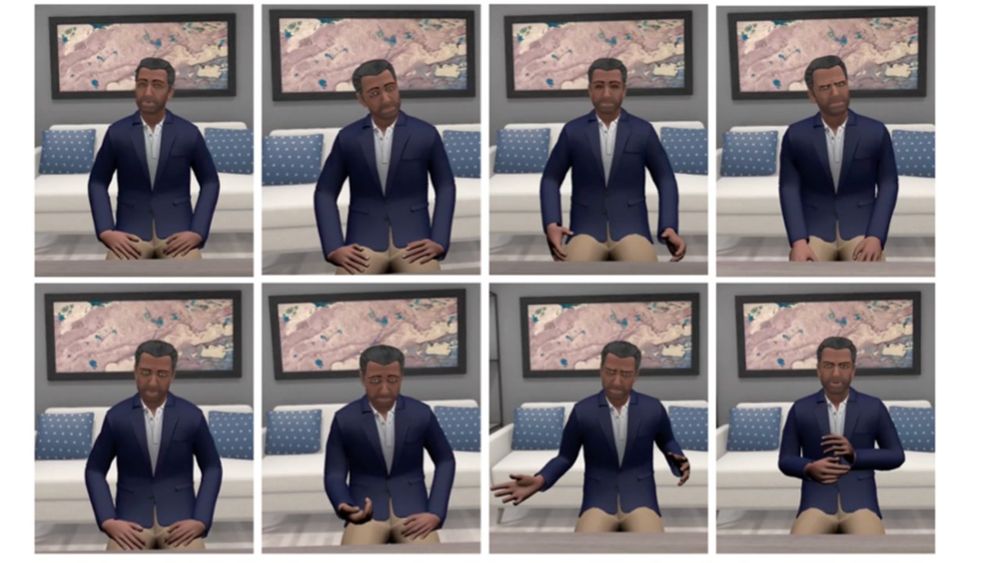
@annacqueiroz.bsky.social shows benefits of embodied perspective taking in corporate context. "Becoming" an employee and reliving one's own feedback improved emotional expressions in conversation. And, practice makes perfect, repeating VR training improves skills.
vhil.stanford.edu/publications...
02.07.2025 17:57 — 👍 3 🔁 1 💬 0 📌 0

@annacqueiroz.bsky.social shows benefits of embodied perspective taking in corporate context. "Becoming" an employee and reliving one's own feedback improved emotional expressions in conversation. And, practice makes perfect, repeating VR training improves skills.
vhil.stanford.edu/publications...
02.07.2025 17:57 — 👍 3 🔁 1 💬 0 📌 0
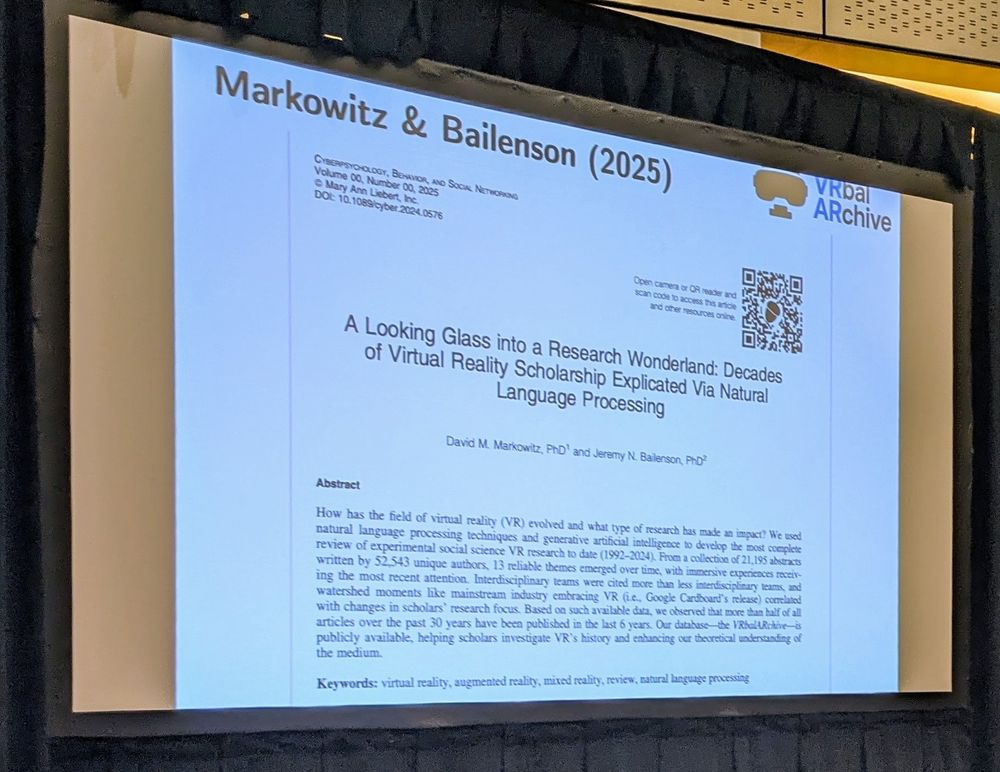
wow, great presentation of a computational literature review from David Markowitz and Jeremy Bailenson with a final sample of 21.000 papers on VR, identifying themes, journals, and metadata. With human coders, this would have taken 7 years of coding.
13.06.2025 18:26 — 👍 2 🔁 1 💬 0 📌 0
What if your brain could control a lobster in VR, or grow a third arm?
Homuncular Flexibility explores how we adapt to nonhuman avatars. A wild journey through brain plasticity, empathy, and VR’s future.
Read the paper by Won, Bailenson and Lanier: vhil.stanford.edu/sites/g/file...
25.06.2025 11:28 — 👍 9 🔁 4 💬 0 📌 0
Some interesting thoughts in here.
28.05.2025 22:22 — 👍 5 🔁 2 💬 1 📌 0
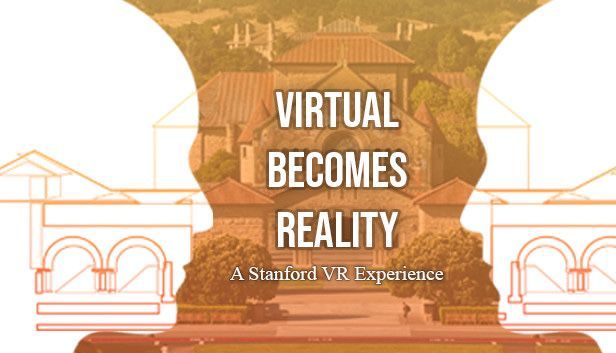
“Explore highlights of nearly two decades of research from Stanford's Virtual Human Interaction Lab and discover how we can use this medium to enhance our everyday lives.”
— Virtual Becomes Reality: A @StanfordVR Experience on Steam https://bit.ly/3qzrO08
01.07.2021 18:08 — 👍 3 🔁 3 💬 0 📌 0
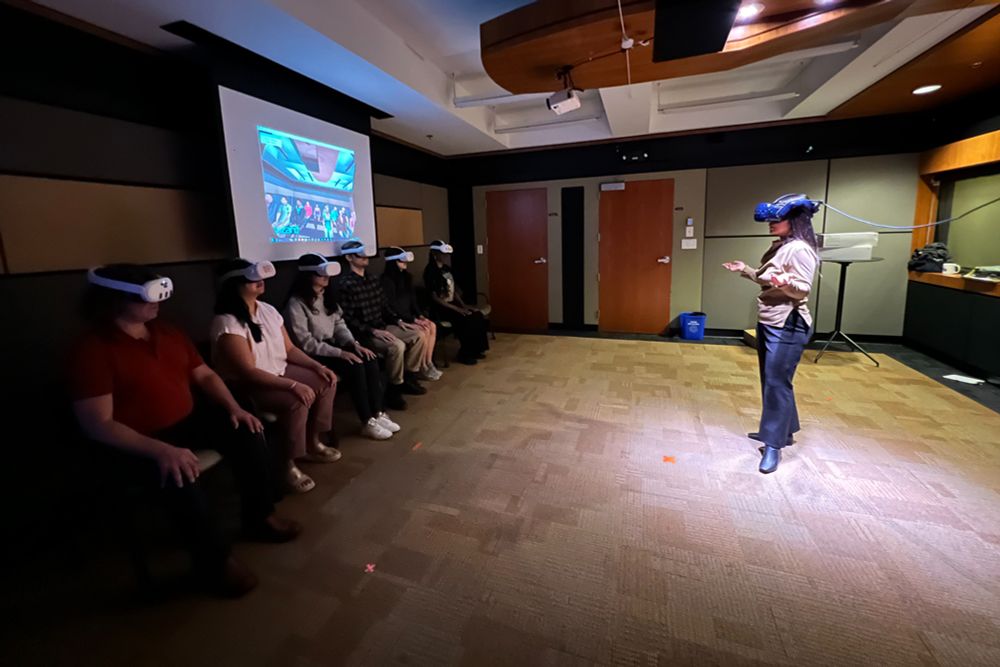
Five things to do in virtual reality – and five to avoid
A review of experimental research reveals how VR is best used and why it’s struggled to become a megahit with consumers.
Learning to fly a plane? Practicing speaking before a large crowd? #VirtualReality is great. Attending mundane meetings, answering email? Not so much. Check out the findings from a review of 30 years of #VR research led by @stanfordvr.bsky.social
news.stanford.edu/stories/2025...
28.05.2025 20:52 — 👍 3 🔁 3 💬 0 📌 0
Clinical Assistant Professor at Stanford, Virtual Reality Therapist, views my own.
XR Hall of Fame | Designed 1st iPhone Game | 4 Keys 2 Fun. Unlocking human potential through play. Developer of Follow the White Rabbit Tales an XR mystery adventure you play in the real world with your real friends. Now soft launched on 🍎 Vision Pro!
Science Writer for Stanford School of Humanities and Sciences. Slowly building my lists in the great BlueSky.
XR / VR developer. Currently working on FastHands & Idea Engine. Game dev for Dimensional, Jigsaw360, Breath Tech.
Founder, Second Life. Also High Fidelity, CIMC.AI. http://rosedales.com
All models are wrong. Some models are useful.
📚 phd candidate @ stanford, nsf grf, comm + cs
👩🏾💻 researching ar/mr/vr through hci and media psych
✨prev: research scientist intern at microsoft research and meta reality labs
🗽🇯🇲🇹🇹
cyanjd.com
phding @Stanford • previously @Columbia • I design and build things in 🥽 sometimes
Ph.D. Student @Stanford.
I study how technology can enhance our senses—helping us see, touch, and experience the world in new ways. https://yujietao.me
North Londoner. "Earnest 1980s Blue Peter presenter impersonator" - The Guardian.
https://www.uploadvr.com/writer/dheaney/
Husband, father, gamer, professor, researcher, tinkerer.
AR/VR researcher since 1991. Bad at Overwatch and Valorant.
Tech Columnist at The Washington Post. Geoffrey.Fowler@washpost.com
Computer Scientist and Neuroscientist. Lead of the Blended Intelligence Research & Devices (BIRD) @GoogleXR. ex- Extended Perception Interaction & Cognition (EPIC) @MSFTResearch. ex- @Airbus applied maths
CEO & Chief Scientist, Unanimous Ai.
Computer Scientist & Research Engineer.
Working in VR, AR, and AI since 1991.
Current Focus: Collective Superintelligence.
PhD Researcher @ Stanford Virtual Human Interaction Lab 👓 | Brown U Alum 🐻🧠 | 🔜 AP @ Univetsity of Florida
Albuquerque, New Mexico. Golf, fly drones, run Spatial Computing meetup group meetup.com/spatial/, VR Club bit.ly/ABQVR VR New Mexico meetup.com/vr-newmexico/ & founded Debate Society bit.ly/ABQDEBATE @wareFLO on twitter.com/wareFLO "Chuck Altspace"@VRchat
Associate Professor at Michigan State University | Stanford and Cornell alum | www.davidmarkowitz.org
Media and Communication is a peer-reviewed open access journal dedicated to a wide variety of research in communication.
2023 Impact Factor: 2.7 (Q1)
https://www.cogitatiopress.com/mediaandcommunication
#AR #VR developer, consultant, blogger.
I love #gamedev, #China, and the Zergs' #QueenOfBlades.
Most of the time I've no idea what I'm doing.







